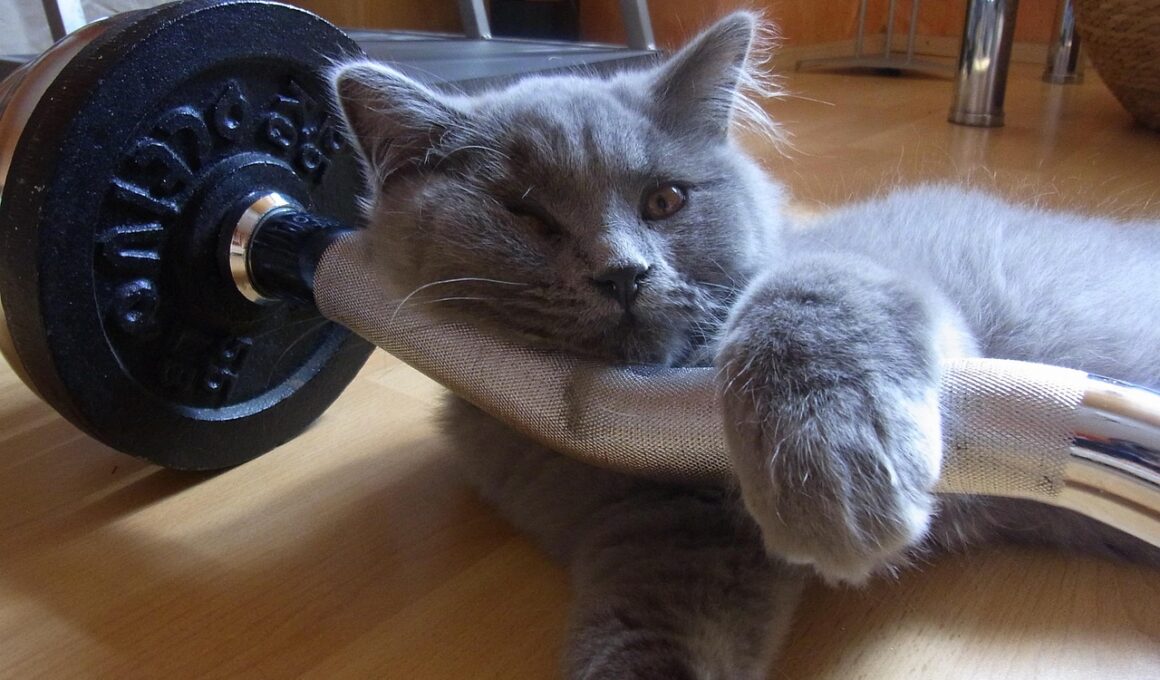Training Cats to Respond to Verbal Commands
Training your cat to respond to verbal commands is both rewarding and enjoyable. Patience and consistency are key in this process. Start by choosing simple commands such as “sit,” “come,” or “no.” Use a clear and friendly tone to encourage your cat to learn these commands. Associating each command with a specific action will provide clarity. You may use treats or toys as rewards, enhancing their motivation to follow your instructions. Create short, daily training sessions for better effectiveness, as cats have shorter attention spans. Regular engagement helps maintain focus and minimizes distractions. Begin with the command you feel your cat will learn best. It may also help to use a clicker or verbal cue that signals a job well done. Repeat the desired commands continuously during play or feeding times. Cats often respond better when they are relaxed and comfortable. Be prepared for some trial and error; not all cats will be receptive to every command. Additionally, understanding your cat’s unique personality can improve your training approach, ensuring a more successful learning experience as you progress together.
Creating a positive training environment is essential for success. Ensure the training area is quiet and free from distractions. Choose a spot where your cat feels secure and calm, as this will enhance their concentration. Getting their attention is pivotal, especially when they’re relaxed. For rewards, use high-value treats—they should be something your cat engages with enthusiastically. Break down each command into small, manageable steps, gradually building their confidence. It’s important to remember that training requires repetition and reinforcement. Celebrate every small success, as this will help to build your cat’s self-esteem. Occasionally, you may consider varying the rewards to keep their interest piqued. Whenever your cat successfully follows a command, be sure to express your praise. Use an excited voice or gentle petting to encourage them. Patience is indispensable throughout this process; not all cats will grasp commands quickly. Adjust your approach as needed based on your cat’s responses. As they begin to associate verbal cues with actions, you’ll notice improvements. Remember to maintain a stress-free attitude, as a relaxed atmosphere helps facilitate learning for your furry friend.
Establishing a Routine for Training
Establishing a consistent training routine is crucial for your cat’s progress. Regular training at the same time each day can help create a sense of structure. Choose a time when your cat is most alert and engaged; this can significantly enhance their ability to learn. Short sessions of about 10-15 minutes are often ideal, ensuring your cat doesn’t lose interest. Surround the training time with positive experiences—a gentle pet or play before or after can make the session feel rewarding. Repetition over the course of several days will help reinforce new commands, and you should be prepared to adapt your approach. Monitor your cat’s mood and energy levels to find the best training times. Whenever your cat responds positively, immediately reward them to strengthen their learning pathway. Observe how your cat reacts to different stimuli during training, as each response can provide insight. Incorporating play into training can boost motivation and soften the learning atmosphere further. Additionally, mixing verbal commands with fun actions keeps your cat engaged and helps reinforce their response positively over time.
Introducing new commands can be done only after your cat has mastered the previous ones. This approach prevents overwhelming them and optimizes focus during training sessions. Once your cat becomes familiar with a command, slowly transition to reducing treats every time they respond correctly. Gradually allowing for a variable reward system can also condition your cat to respond consistently. Should your cat show any signs of frustration, briefly halt the training session and re-engage later. This ensures the environment remains positive. Incorporating diverse environments will also help your cat adjust to commands in various situations. Try practicing commands in different rooms or even outdoors once they show mastery indoors. Positive associations with verbal commands can help your cat generalize their responses regardless of environment. You may also consider inviting friends or family to give commands occasionally, allowing your cat to acclimate to different voices. Maintaining consistency in tone and delivery, however, is paramount. As your cat becomes more accustomed to these exercises, you’ll witness significant improvements in their responsiveness. Enjoy this unique bonding experience while cultivating your communication skills together.
Addressing Challenges During Training
Challenges during training are common and should be addressed patiently. Each cat is unique; some may learn quickly, while others might take longer to grasp verbal commands. Recognize that a frustrated cat may disengage entirely from the training process, making it critical to monitor their emotional state. If you notice their enthusiasm waning, consider taking a break before re-engaging. It may also be helpful to ask for advice from friends or fellow cat owners who have successfully trained their pets. Frequent distractions, such as noise or other pets, can create hurdles. Prepare for these interruptions, maintaining focus by minimizing external stimuli. Incorporating different techniques like luring with a toy can maintain their interest, even when training gets repetitive. Additionally, never resort to punishment if your cat fails to execute a command; this can breed negative associations with training. Instead, reinforce positive behavior and patiently encourage learning. A playful, inviting approach will foster a positive environment where your cat feels confident exploring commands. Keeping the experience enjoyable creates a well-adjusted and obedient pet. Overall, navigating challenges together strengthens the bond between you and your feline friend.
As your cat becomes more adept at following commands, you can increase the complexity of tasks. Introducing tricks beyond basic commands can be a fun progression; it keeps the training engaging. Something simple like teaching your cat to jump through a hoop or perform a spin can stimulate their intellect. Use the same principles of reward-based training when introducing these new tricks; as they master each step, celebrate their accomplishments with genuine praise. You may also consider incorporating props to facilitate learning and keep the sessions exciting. For example, using a small hoop or target can be great tools to encourage jumping behaviors. Cats often love play—integrating playtime into learning sessions can speed up the process, creating a lively atmosphere. If your cat seems distracted, try using their favorite toy as a reward to attract their attention back to you. Regularly changing up the exercises keeps their excitement alive and allows you to vary the commands into a fun game. Eventually, your cat will not only learn to respond to commands but also enjoy showcasing their new skills, deepening the bond you share.
Conclusion: The Benefits of Training
Training your cat to respond to verbal commands offers numerous benefits beyond obedience. An effectively trained cat is often better integrated into your household, reducing stress for both pet and owner. Bonding through training strengthens your relationship, as it nurtures trust and understanding. Engaging in educational play promotes mental stimulation, reducing the chance of behavioral issues caused by boredom. Additionally, a mentally stimulated cat is less likely to engage in destructive behaviors. Enhancing their ability to respond to commands can increase safety, especially in potentially dangerous situations. Teaching commands like “stop” or “leave it” can prevent accidents. Moreover, fostering communication between you and your cat can enhance their independence, empowering them to process their environment actively. Training also provides an excellent outlet for physical energy, contributing to their overall health and wellbeing. Not to mention, showcasing their skills can be entertaining for both of you. As you celebrate milestones in your cat’s training journey, the bond you’re nurturing becomes increasingly gratifying. The satisfaction of witnessing progress reinforces your commitment to continuous learning, making your time together increasingly enjoyable. In conclusion, the world of cat training opens enriching experiences for both you and your feline companion.
Training your cat opens up numerous exciting activities and can lead to deeper trust between pets and pet owners. As you both navigate this journey together, you will discover layers of communication that you previously may not have noticed. The interaction deepens your understanding of feline behavior and builds a more harmonious home. In any training endeavor, always remember to keep enthusiasm high and allow space for growth and learning. Cats thrive in nurturing environments, making your approach greatly impactful. All those efforts create a wonderful atmosphere where your cat can shine and feel fulfilled while learning. In this enriching process, you not only gain a more obedient pet, but also develop a unique bond that will transcend expectations while cultivating adventure. Being attentive to your cat’s needs fosters positivity and engagement, encapsulating the spirit of training. Revel in the delight of seeing your furry friend master commands and tricks, and share their achievements proudly with friends and family. By choosing this training path, you enhance both the quality of their life and your time together. The investment in training often yields lifelong benefits, creating a joyful partnership you will cherish.


